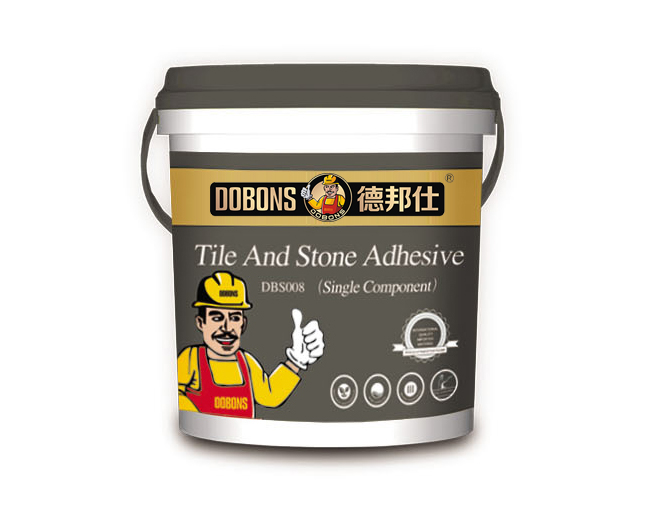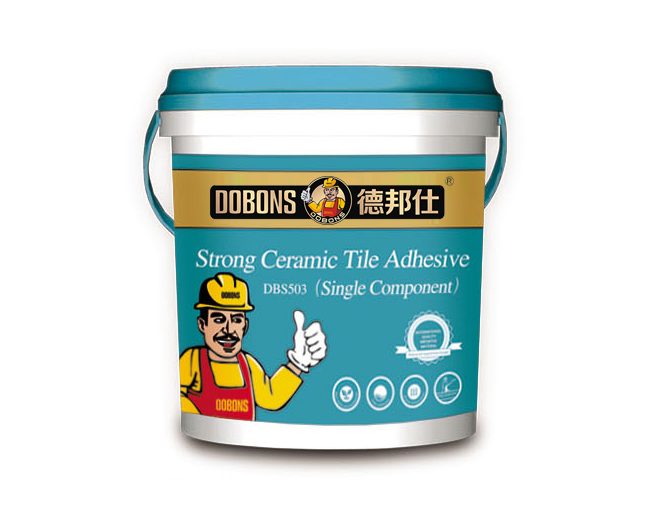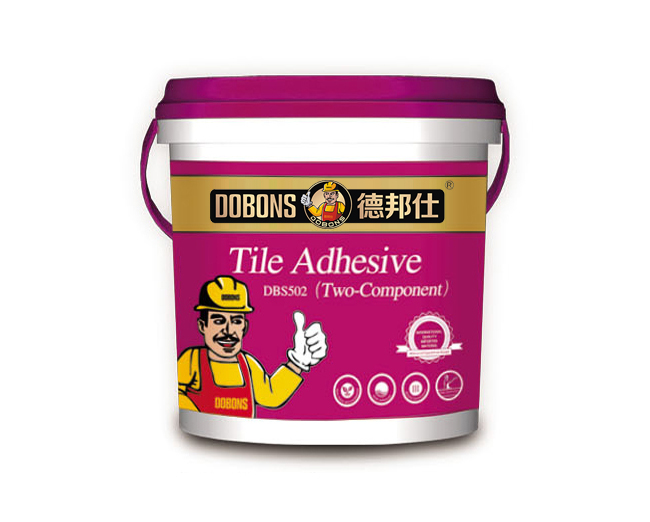Do you know how to choose right tile adhesive?
Date of issue:2019-12-23 Author:Dobons Click:
Do you know how to choose right tile adhesive?
When you decorate your new house, you may just thinking how to pick your perfect tiles? But don't neglect another important factor- adhesives and installation. After all, your new tiles are only going to look their best if they're fitted correctly.
We use tile adhesive to stick our tiles to walls and floors. There's a myriad of different substrates (that's the technical term for walls and floor surfaces) and tile types out there, so it's vital that the correct adhesive is chosen to ensure your tiles stay in place for years to come.
We always recommend seeking the advice of a professional tiler, who will be best placed to pick the correct adhesive for your project. However, we've put together this handy guide to help you make the right choice if you're choosing adhesive yourself. As with everything, if you need any extra advice just get in touch and we'll be delighted to help.
What types of tile adhesive are there?
There's two different types of tile adhesive, ready mixed pastes and powdered adhesives.
As the name suggests, ready mixed pastes can be used straight out of the tub so they're pretty easy to use. But with ease comes limitations – in general, pastes can only be used to fix smaller ceramic tiles to walls.
On the other hand, powdered adhesives need to be mixed with liquid into a slurry which takes a little more time and effort. However, they offer a far stronger bond and in general, can be used to fit ceramic, porcelain and natural stone tiles to almost any substrate.
What substrate are you fixing to?
As we mentioned above, there's a whole host of different substrates that tiles can be fixed to. Let's look at the most common options:
WALLS – PLASTER AND PLASTERBOARD
Small ceramic tiles are often used for walls and splashbacks and in most cases, a ready-mixed paste will be suitable for the job.If you're fixing a larger ceramic tile (larger than 30 x 30 cm) or any size porcelain tile to your walls, you will need to use a powdered adhesive. These come in different colours, setting speeds and flexibility options, which we'll discuss below.
It's important to ensure your wall can bear the weight of tiles and adhesive. Where possible, we'd advise tiling directly onto plasterboard rather than fresh plaster. We'll discuss weight on walls in more detail below.
FLOORS – CONCRETE OR SCREED
For concrete or screed floor, you'll always need to use a powdered adhesive. Newly laid floors will need to be sufficiently dry before you can tile – generally concrete bases need a minimum of 6 weeks.
A closer look at powdered adhesives
Not all powdered adhesives are born equal and there's numerous options to pick from, depending on your project. Let's look at some of the more common options:
COLOUR
Most adhesives are available in either white or grey. Generally, when using a lighter grout you'd use a white adhesive, and vice versa.
FLEXIBILITY
Even in your home, floor tiles experience a lot of stress from foot traffic, underfloor heating and movement in the subfloor. The adhesive bed can absorb this stress to reduce the chances of your new floor cracking.
SETTING TIME
Powdered adhesives are often classified as either ‘standard’ or ‘rapid’ setting – this refers to the working time you have to use the product. The faster the adhesive sets, the sooner you can get onto grouting and finishing your room.
As the name suggests, a rapid setting adhesive will set much faster than a standard adhesive. For example, our DBS503 Strong Ceramic Tile Adhesive and DBS008 Tile And Stone Adhesive, Rapid sets within 15 minutes, compared to over 3 hours for other standard adhesive.
In many cases, it makes sense to pick a rapid setting adhesive. It can save time and overall cost. If you're on a time-critical project, our Dobons Tile Rapid Adhesive series can help you within short time. Mix, pour, and leave to set while you have a tea break!
General Preparation
When it comes to fixing tiles, the old saying that “Failure to prepare is preparation to fail” couldn't ring more true. So before you open the first tub of tile adhesive, it's vital that your substrates are ready – ie. they're flat, clean and strong enough to take your tiles.
FLAT
No-one wants to tile an uneven floor – it's difficult to get your tiles perfectly level and you'll end up wasting adhesive. Use a 2m straight edge to check how flat your substrate is; if there's any deviations more than 3mm then we'd recommend pouring a coat of self-leveller to provide a flat, level surface.
Uneven walls can be made flat by using a good plasterer (if you're using small ceramic tiles) or by fitting tile backing boards.
CLEAN AND DRY
Dust and dirt can interfere with the adhesion of the tile and might find their way into the grout, so take care to sweep your substrates before tiling.
STRENGTH
As we touched on above, it's important to consider the weight of tiles and adhesive when tiling plaster or plasterboard walls. Fresh plaster can bear 20kg per square metre, while plasterboard can take 32kg per square metre.
As a general rule, you'll need to allow 2 – 4 kg per square metre for the adhesive and grout, on top of the weight of tiles. This weight can vary; small ceramic tiles are usually quite light, but larger porcelain tiles can weigh over 20kg per square metre. Where possible, we'd advise fixing wall tiles to unplastered walls or better still, tile backing boards. These can usually bear between 40 and 60 kg per square metre.
We'll assume your floors are strong enough to bear the weight of tiles – after all, if they're not, you shouldn't be walking on them!
FULL COVERAGE
It's vital that there's a full bed of adhesive between your tiles and substrate as any voids could lead to cracked tiles further down the line. It's often a good idea to ‘back-butter’ the tile with adhesive, to ensure a full and even coverage – this is especially true with larger floor tiles. Don't be tempted to ‘spot-fix’ tiles by applying a dab of adhesive to each corner!
CURING
It's also very important to let the adhesive fully cure before walking on your new floor tiles. Otherwise, any pressure might shift a tile slightly and you’ll end up with an uneven floor. On a similar note, any underfloor heating systems should not be turned on for at least 2 weeks after tiling. Turning on the system too early risks weakening the adhesive.













